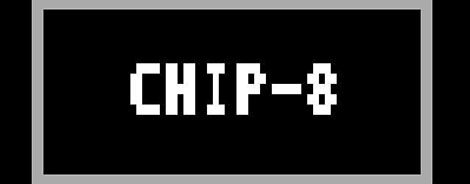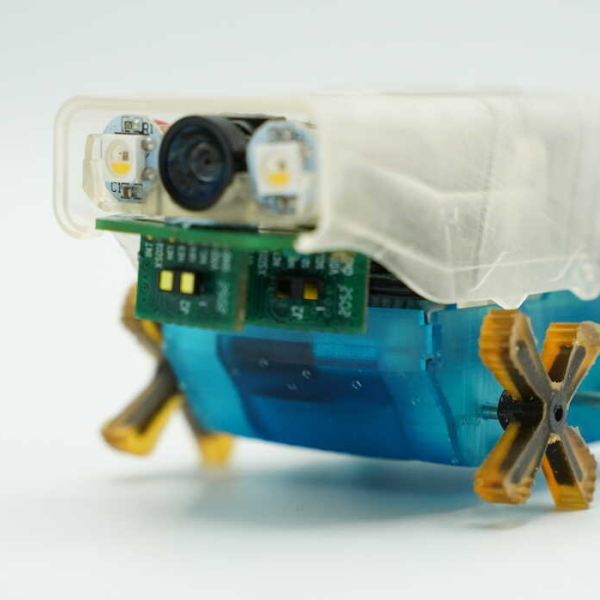
Classic computers are just up [Jeff]’s alley, so when he looked for a new project for his Pocket Mini Computer, he looked at one of the earliest microcomputers available: the COSMAC VIP, a 1.76 MHz beast from 1977.
The COSMAC VIP was a single-board educational computer released by RCA in 1977. Priced at just a hair under $300, the COSMAC was much more affordable than infamous $1300 ‘fruit’ computer also released that year. To get young programmers up and running quickly, the COSMAC came bundled with the CHIP-8 programming language, making it very easy to generate graphics on-screen for all the eventual PONG and Breakout clones.
[Jeff]’s COSMAC VIP runs on a Pocket Mini Computer, a very cool Parallax Propeller-powered board we’ve seen before emulate other retro computers including the venerable Commodore SID synthesizer chip.
Because the COSMAC’s user interface was the very, very old-school 4×4 hexadecimal keypad, [Jeff] found it necessary to emulate this retro feature by soldering his own 4×4 keypad. After soldering 16 buttons into 8 columns and rows, [Jeff] connected this keyboard to a PFC8574a I2C I/O expander and connected this chip to the I2C bus on the Pocket Mini Computer.
The result is an emulated COSMAC VIP that’s just begging for an ‘introduction to microprocessors’ class or just a round of Tetris, Tic-tac-toe, Lunar Lander, or one of the several Breakout clones available for this very cool computer. A pretty awesome build, even if it is from the dawn of the computer age.
















This looks cool.
I still have a 6800 based machine that runs CHIP-8.
10 years after they published the original board ETI put out an expansion board, mainly because the original ended up in places they had never envisioned!
CHIP 8 is pretty easy to learn and fairly powerful.
FYI the Cosmac VIP had and 1802 MPU, same as the SCMP
FYI, the building that housed the “Cosmac-ELF” manufacturer Netronics is still there. I drive by it every day. They still have a little “Netronics” sign in the front window :) Ahh… the old days!
Ah, good ole’ Netronics. I spent a ton of teenage money with them.
The 1802 was a strange but kinda cool uP. Minimalism. Anyone remember the Set X Instruction (SEX)? Or that you could set the PC to any of the data registers.
I too spent a bunch of money with them, and finally threw away that board (:-o) about 7 years ago. It was a mouses home in the case. I tried cleaning it up, but eventually gave up. I regret it every couple months.
I still have the original Popular Electronics article about building it, and several follow up issues.
As a young man, yes the SEX instruction always got me giggling. The chips limited instruction set forced you to think about how you were going to do stuff a little differently than most other instruction sets (calling sub routines using different registers is the one I remember).
256 bytes (not K not M or G) was always a fun limitation.
Having learned to program machine language on the 1802 it was a real shock to have to learn to program lesser processors. And did you know it was commonly used on satellites at the time because it was much more radiation resistant?
Does anyone else remember the TASA keyboard they had?
Still have one, it’s totally solid, a real cure for “key bashers”!
Computer still boots:
EXPLORER-85 VER 1.4
COPYRIGHT 1979
NETRONICS R&D
NEW MILFORD, CT.
Now, if I had a cheesy tape recorder to load the tapes, I could be in business!
So, why did the COSMAC go into oblivion, and that “fruit” board went on to make history?
Are you honestly, seriously, asking why a hobbyist single-board computer didn’t sell as well as a complete Apple II?
I thought the “fruit” reference was to the Apple 1.
Features of each from oldcomputers.net
Model: VP-111
Available: 1977
Price: US$275 (in kit form)
CPU: RCA CDP1802 @ 1.76MHz
Memory: 2048 byte RAM, 512 byte ROM
Interface: 16-key “hex” keypad
Display: composite video, 64×32 pixels
Ports: audio, video, cassette, parallel
Storage: optional external cassette
OS: RCA “CHIP-8” language
Introduced: March 1976
Released: July 1976
Price: US $666.66 w/4K RAM
How many? about 200 total
CPU: MOS 6502, 1.0 MHz
RAM: 4K, 65K max
Display: monochrome
280 X 192, 40 X 24 text
Keyboard: not included.
Ports: composite video output
keyboard interface
one vertical expansion slot
Storage: cassette interface available
OS: firmware in ROM (HEX)
Apple BASIC on cassette
Those are the specs for the Apple I, not II. I’d recognise that price tag anywhere…
I hate to be that guy,but this is too much:
“…old-school 4×4 hexadecimal keypad, [Jeff] found it necessary to emulate this retro feature by soldering his own 4×4 keypad. After soldering 16 buttons into 8 columns and rows…”
Can you spot the mistake ;)
There doesn’t appear to be a mistake. There are four rows and four columns. There are a total of 8 rows and columns combined. It’s a little stilted, but I was able to comprehend it just fine, being a human who is able to make inferences as opposed to a computer or an autist.
He never said he couldn’t understand it. Who’s the autist now?
I still have my vip. One of these days I’m gonna build a display case for it.
It’s the siiiiiize of a pocket!
Who had a spare $300 in 1977?
My SYM-1 was $275, then I added RAM, which back then was expensive.